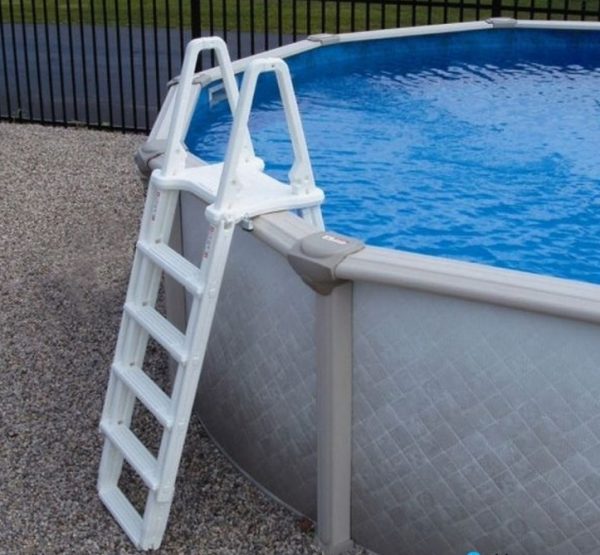In this article, we aim to discuss pool steps, also known as pool ladders, their types, and important considerations for purchasing and installing them.
Since the dawn of humanity, no tool or equipment has been created without a purpose. Every tool emerges to perform a task and address a specific issue. Certainly, pool steps are no exception to this rule. In all types of pools, from residential to competitive and therapeutic ones, pool steps are used for people to exit the pool, providing assistance to tired swimmers to reach the pool’s edge more comfortably. Nowadays, these steps are manufactured in various qualities and shapes, which we will delve into later.
What are Pool Steps or Ladders?
Pool steps or ladders are essential equipment found in all pools. In pools longer than 10 meters, typically two ladders are used, while pools shorter than 10 meters usually have one ladder in shallow areas. Generally, in residential pools, a single ladder is used.
When we talk about pool steps, we usually refer to ladders with two to eight steps. Most pool ladders are made of stainless steel, but compressed plastic or polymer materials are also widely used for ladder steps. However, a closer look at the market and purchasing websites reveals various types of these ladders. Before we delve into their types, it’s better to become more familiar with the materials used in these steps.
Materials Used in Pool Steps
Since these steps are mostly submerged in water and constantly exposed to moisture, it’s preferable to use high-quality stainless steel, which is both durable and rust-resistant. Such stainless steel types are highly resistant to chemicals present in the water, such as chlorine, ozone, and acids, which are abundant in pool water and can cause equipment erosion.
However, in some pools, a combination of plastic and steel steps is used, with high-quality stainless steel used for the handrails up to where they are submerged in water, and the steps themselves are made of compressed plastic or polymer. While stainless steel steps enhance the pool’s aesthetics, they can cause swimmers’ feet to slip due to abrasion. On the other hand, plastic provides friction, preventing slipping and abrasion for swimmers.
Types of Pool Step Models
Pool steps come in various models, and here we’ll examine some of them:
- Sloping Steps: These steps are made of stainless steel and zinc and typically consist of 2 to 5 steps. They boast a beautiful design, with steps being 12 centimeters wide and flat. The width of the steps prevents pressure on swimmers’ feet when exiting the pool. Moreover, they use anti-skid plastics on the steps.
- Plastic Steps: Another type of pool ladder is the plastic step. These steps are made of ABS polymer. Their prominent feature is resistance to slipping. Therefore, they are not very suitable for pools primarily used by children, the elderly, or non-professional swimmers.
- Stick Model Steps: Club or stick model steps are one of the most common types of pool ladders. They are called club or stick models because the top parts of the handrails are semi-circular. This model occupies much less space on the pool’s side edges. An important advantage of this ladder model is that its connections are hidden and concealed. The material for this ladder model is stainless steel 316 and 304.

